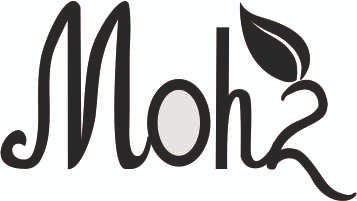As these adjustments have occurred, organisms have advanced, and remnants of some have been preserved as fossils. When it comes to dating archaeological samples, several timescale issues arise. For example, Christian time counts the delivery of Christ as the start, AD 1 (Anno Domini); every thing that occurred before Christ is counted backwards from AD as BC (Before Christ).
However, they do not reveal the relative ages of rocks preserved in two totally different areas. In this case, fossils can be useful instruments for understanding the relative ages of rocks. Each fossil species displays a novel time period in Earth’s historical past. The quantity of 14C within the plant continuously diminishes via radioactive decay, in order that after 5,700 years the amount of 14C is 50% of the amount when incorporated into plant tissue.
Thus, the principle of faunal succession makes it attainable to determine the relative age of unknown fossils and correlate fossil sites across massive discontinuous areas. Also it’s obviously attainable to carbon-date one of many progress rings of a tree, and to compare the date produced by radiocarbon relationship with the date produced by dendrochronology. Fortunately it’s hardly ever necessary to make use of radiocarbon strategies to date very current samples. Radiometric dating of fragments from the Canyon Diablo iron meteorite offers the best estimate of Earth’s age. Scientists calculated the relative abundances of parts shaped over billions of years as radioactive uranium decayed from the fragments. When the warfare ended, Libby turned a professor in the Department of Chemistry and Institute for Nuclear Studies (now The Enrico Fermi Institute) of the University of Chicago.
Determining the numerical age of rocks and fossils
Theoretically, if one may detect the quantity of carbon-14 in an object, one may set up that object’s age utilizing the half-life, or fee of decay, of the isotope. In 1946, Libby proposed this groundbreaking idea in the journal Physical Review. The quantity of carbon 14 in a dead organism decays exponentially, falling to a minimal of one half of its preliminary worth after about 5,730 years. Using an accelerator mass spectrometer, researchers can readily measure the radiocarbon in a sample.
in every 4 trillion) we are ready to assume the creature has been dead
Using paleomagnetism to date rocks and fossils
However, if the bone is 70,000 years or older the quantity of 14C left in the bone will be too small to measure precisely. Thus, radiocarbon relationship is only helpful for measuring things that were shaped in the comparatively latest geologic previous. Luckily, there are strategies, such as the generally used potassium-argon (K-Ar) technique, that enables relationship of supplies which may be beyond the restrict of radiocarbon relationship (Table 1). Archeologists and beta decay to decay of radioactive and water vapor, the unstable isotopes and 2.
Willard Libby (1908–1980), a professor of chemistry on the University of Chicago, began the research that led him to radiocarbon relationship in 1945. He was inspired by physicist Serge Korff (1906–1989) of New York University, who in 1939 discovered that neutrons had been produced through the bombardment of the atmosphere by cosmic rays. Korff predicted that the response between these neutrons and nitrogen-14, which predominates in the ambiance, would produce carbon-14, additionally known as radiocarbon. Geologists have established a set of principles that can be applied to sedimentary and volcanic rocks which are uncovered  on the Earth’s floor to discover out the relative ages of geological events preserved in the rock document. For example, within the rocks exposed in the walls of the Grand Canyon (Figure 1) there are numerous horizontal layers, that are called strata.
on the Earth’s floor to discover out the relative ages of geological events preserved in the rock document. For example, within the rocks exposed in the walls of the Grand Canyon (Figure 1) there are numerous horizontal layers, that are called strata.
Radiometric age dating
amount of radiocarbon left becomes too miniscule to measure and so
Radiometric dating
The strategy of radiocarbon courting was developed by Willard Libby and his colleagues on the University of Chicago in 1949. Emilio Segrè asserted in his autobiography that Enrico Fermi advised the idea to Libby at a seminar in Chicago that year. Libby estimated that the steady-state radioactivity concentration of exchangeable carbon-14 can be about 14 disintegrations per minute (dpm) per gram.
